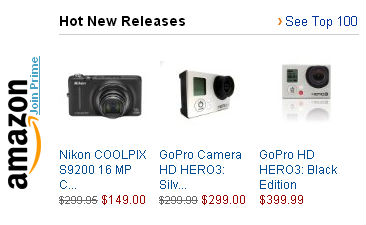Whether you’re involved in print or web design, the various design elements—such as typography, shapes, lines, colors, spacing, and images or graphics—need to work together to produce a coherent and engaging visual design. Photographs are an important element of many visual designs, and graphic designers need to use high-quality photographs at the right resolution to ensure sharp and detailed results for print and web.
Photographic Image Quality and the Camera
Photographic image quality refers to the perceived sharpness, contrast, detail, and color rendition of the viewed image. Although post-processing and printing can dramatically impact the final result, no amount of digital manipulation can overcome flaws in the original out-of-the-camera file.
Photographic image quality depends on many factors, including the camera’s resolution and specs. In digital photography, the camera’s resolution is measured in megapixels (i.e. millions of pixels), and resolution describes both pixel count and pixel density. Camera resolution affects print size, cropping options, image resizing, and display quality on high-resolution monitors.
Contrary to popular belief, a camera’s megapixel rating (i.e. the number of megapixels a camera can capture in a single shot) does not impact photographic image quality. In fact, high megapixel ratings on smaller cameras often result in greater noise and inferior image quality.
On the other hand, certain camera specifications can tell you a lot about the camera’s potential image quality, and these are all related to the camera’s sensor.
Camera Specs that Affect Photographic Image Quality
Image Sensor
A digital camera’s image sensor detects and conveys the information that results in an image. When you take a photo, the sensor is exposed to light while other components in the camera record what the sensor sees. There are many types of camera sensors, and the four most relevant are cellphone and point-and-shoot sensors, Micro Four Thirds sensors, APS-C sensors, and full-frame sensors.
- Cellphone and point-and-shoot sensors: Cellphone and point-and-shoot cameras tend to have tiny sensors. This often results in inferior image quality because a tiny sensor can only accomplish so much.
- Micro Four Thirds sensors: Many Olympus and Panasonic cameras use Micro Four Thirds (MFT) sensors. Measuring 17.3mm x 13mm, Micro Four Thirds sensors are a compromise between the larger sensors of DSLRs and the smaller sensors of point-and-shoot cameras. Cameras that use Micro Four Thirds sensors accommodate interchangeable lenses, and users can take higher-quality images while handling a camera body that’s less bulky than the average DSLR.
- APS-C sensors: These are commonly found in DSLRs, though they can also be found in some compact cameras. APS-C sensors give users greater control over depth of field. APS-C sensors measure 25.1mm x 16.7mm and are considerably smaller than the sensors found on full-frame cameras. Because of the crop factor (which magnifies the attached lenses), users who want to take wide images will need to buy wider lenses.
- Full-frame sensors: These sensors are the digital equivalent of 35mm film (which measures 36mm x 24mm). Unlike APS-C sensors, full-frame sensors do not have a crop factor. As a result, DSLRs with full-frame sensors can capture higher-quality images, handle low-light situations well, and produce a very shallow depth of field.
As a rule of thumb, the bigger camera sensors tend to produce higher-quality images, though this is not always the case. While you need to pay attention to more than just the camera’s sensor when assessing potential image quality, the sensor size is a great place to start when comparing the specs of different cameras.
Image Processor
The camera’s image processor won’t affect photographic image quality directly, unless you’re shooting in JPEG. A camera armed with a good image processor will enable it to fix lighting issues and adjust other settings that can positively impact photographic image quality.
A good image processor also enables a camera to capture images in quick succession. While this feature won’t affect image quality directly, continuous image capture (also known as burst mode) can mean the difference between getting a good shot and getting an excellent shot.
Lenses
It may surprise you that lenses have a bigger impact on photographic image quality than the camera body (which explains why some lenses cost more than camera bodies). Long-time owners of cameras that accommodate interchangeable lenses know just how important a good lens can be to producing high-quality images.
The lenses on point-and-shoot cameras and lower-end smartphone cameras tend to be of inferior quality because they’re tiny and are fixed to the camera. DSLRs and mirrorless cameras offer users greater versatility and superior photographic image quality because they can accommodate interchangeable lenses. With interchangeable lenses, users can choose specific lenses to suit different photographic scenarios.
When trying to determine the quality of a lens, you should start by looking at its maximum aperture or how wide the lens can open. Wider apertures allow in more light, which enables you to take photos more easily in low-light situations. Lens apertures are rated in f-stops. For example, if your lens has an f-stop of f/3.5, it has a maximum aperture, or f-stop, of 3.5. Wide apertures are generally considered to be in the range of f/1.4 to f/2.8.
Other Factors Also Determine Photographic Image Quality
There are other factors outside the camera that determine photographic image quality—including the photographer’s focus and exposure, as well as the recording format chosen by the photographer. However, by assessing the most vital camera specs, you can more accurately determine the camera’s potential image quality and source high-quality photos for your designs.


